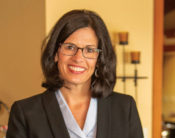Editor’s Note: This is an edited version of a focus group conducted in connection with the 2019 State of Manufacturing® survey.
There is an organization in Minnesota that projects the number of unfilled jobs in the state to grow from 60,000 to near a quarter-million in just the next several years. What’s your reaction to that as educators?
- I would make it clear it’s a living wage job. And if it was 60,000 of those, I’d be very concerned. Entry-level jobs don’t concern me as much.
- I just think as educators we have a responsibility to prepare students for success after high school, to be able to fill the different in-demand jobs that may be available—whether it’s in health care, manufacturing, or any kind of position that may be skilled or unskilled.
- We don’t push for college as much, not like we used to, because seven out of every 10 jobs require a skill. So, it’s more about the skills and the trades; it’s our job to find the passion of our students and to support that passion.
- I would add that it’s our job to make sure we graduate well-rounded students who are full of options and able to live in the 21st century with adaptability and flexibility. As a school district, we can’t do much in terms of bringing in workers from other states, but I think if we increase our capacity to graduate more students, we are contributing and doing our part to help feed that workforce.
- And it’s giving high school students the opportunity to develop their passions and learn their skills and their interests, giving students the opportunity to work and learn on the job. And creating a partnership for students who need to learn soft skills. Or who need to learn some of the basics. They might not really understand what their interests and passions are until they are hands on in the business, employed with a paycheck, with a boss, and with expectations to perform and execute. So, to find a partnership between businesses and school districts that allows for more internships and work experiences to develop those interests, I think that is effective.
- I get weary of the relationship you’ve brought up between private and public entities. What I feel could occur, or I get worried about, is if we don’t build a quality partnership, the private industry will say education’s job is to make sure students are ready so that they step right out of high school and into my employment, and they’re not ready for it.
- So all of a sudden, we’re supposed to pigeonhole our kids at certain things that they’re not even ready or willing to do. And it’s because the private industry is telling us that we have to, or they’re saying, when I form a partnership with you guys, you give me a kid who’s not ready to work or ready to do the things that I need him or her to do, and I’m trying to run a business. And I get worried that with the large amount of jobs available, we start to ask what is education doing to prepare these kids for my particular field? Even though there are 160,000 jobs with an extreme array of what it is that we’re supposed to be preparing them for.
- At the high school level, when students are starting to look at opportunities and what their skills and interests are, exposure is so important. So many students don’t have exposure to what it truly means to be in the health field or a manufacturing business setting. They haven’t had the experience yet, so they can’t draw from it. At the high school level, offering exposure is a way for students to see if it fits or not. For example, some students are going to take part in a Certified Nursing Assistant (CNA) position and think, “Absolutely, I want to go into the health field.” Then they become a CNA and they realize, hey, this is not for me. Or a student goes into manufacturing, mechatronics and then sees it in more of a realistic point of view. Then, prior to graduation and going to college, they have a little more depth in terms of making those vital decisions.
Bemidji gets great kudos for being a district that understands four-year degrees aren’t the only path. What’s the secret sauce? How did that happen here?
- I think we have an excellent school-to-work program.
- I think it’s our community, too.
- Community has really engaged the school, and there is a partnership with our community economic development team. They see it as an issue not only for Bemidji. And they see if we can get our kids engaged here, even if they leave, possibly they’ll come back. And if they don’t come back, they’re going to speak highly of the area and know that this is a community that does good things for kids. So, it’s not only what we’re doing in the schools, it’s bigger than that.
Are there formal relationships between the business community, community leaders, and the school or was it more of an organic growth?
- Each academy we started has a high school staff lead—we’re going to have 18 of them next year—and then our community partner or partners. We work in conjunction with our partners to decide which classes are required and which are recommended. We get advice from our partners on curriculum and what we should be teaching. An example of that from a couple of years ago is one of my tech teachers and I went to our electronics team and he asked, “What should our outcomes be for drafting?” And they said, “Well, what are you drafting on?” “Well, we’re doing paper and pencil T-squares like I did back in the 80s.” And the guy looked at us like, “Why are you doing that? Everything’s CAD [computer-aided design]. We don’t do paper and pencil.” And we felt stupid at the time, but you don’t know what you don’t know.
- By having partnerships, we got all those drafting tables out, no more T-squares, and I took six months to raise $10,000 and we put 32 computers in there. So, everything’s CAD. That’s one example of working with our community partners. And we have industry partners who were going to start their own apprenticeship program or their own internship program, but now that they know what we have, they don’t have to do that. There isn’t a partner that isn’t supportive of what we’re doing because we all want the same thing.

Are resources still a challenge here in Bemidji?
- I surely don’t feel that we have an abundance of resources. There’s been a lot of work done with the academies to try to encourage community partners to give to that program. But it’s not like the money is just flowing in.
- I think it’s a large web of 15 years of work and building.
- It’s not as though we all of a sudden were blessed with a pot of money or a pot of broad resources. I think it’s the building of partnerships. We’re seeing a willingness within our community to partner in any way. And one of the things that you see is not every partner is just throwing money at the problem. They’re developing exposure programs. They are taking our kids on internships. They are coming into our school and doing trainings. So, you’re getting some financial resources, some raw resources, and in-kind training. You’re getting a lot of pieces where people are willing to be part of the educational process.
Does a lack of counselors create a lack of resources?
- Yes.
- I think we do a lot less of the guidance and counseling and working with kids than we should. And it’s because of limited resources. We are hoping that we can move in a direction to get more resources, and we’ve been talking a lot about it this year. We’re very reactive, and we’re not able to be proactive because of numbers. It’s 1,472 students, or whatever the number is, and two counselors. So yes, we feel that resources are an issue.
- That’s a big part of it. The funding formulas don’t allow for it to happen, and it’s an expensive decision. We have to think outside the box, and thanks to the career academies and to some brands, we are looking at doubling our number of counselors at the high school next year. So, that’s exciting.
- We have over 600 kids right now signed up for the academies. And we’re only a year and a half in. So, we have everything in place except for bodies—a team to work with our kids.
- Again, the guidance piece and the jobs and the frustration a business might have with school counselors comes down to resources. I really believe that. I believe as we get more resources, we have more community partners who put resources into working proactively with kids, instead of it being a reactive system where we’re putting out fires. That’s going to make a difference in how we can better serve students, and it’s a guidance format for all of us—middle school and high school. We can start to work a little bit more, and not just with the kids who have mental health concerns or social-emotional issues, but also the ones who just want a little help and guidance, need some direction and want to talk to a manufacturer or talk to a business or do more things with the academies. It’s hard for us to get the time to really meet and discuss that and college plans with kids.
Let’s talk about that college track, the B.A. track. It has become cliché in these focus groups for someone to say that public high schools just want to be factories for four-year degrees. What’s your perception of this? Is there a prejudice that the four-year degree is the only way to a remunerative and satisfying career?
- Well, you said nine out of 10 groups say it’s too high. We look at a kid who has to mature, and through the maturation process maybe he wants to be a nurse, a school counselor, a teacher, and you have to give him that chance to mature and all that. College helps a lot of folks mature. I mean, I want to push 80 percent of them to look at that.
- We’re not pushing them at the high school level. We already know our group that’s going out to a four-year college. We’re not worried about that.
- Well, 75 percent of them are in music. That’s 75 percent right there. They’re in our first hour of music.
- Where do the poor kids go after high school? In the ‘60s and ‘70s they joined the Army, they joined the Navy. And growing up in a farm community, that was my out, to join the military. Now you look at kids and you ask, “What options do I have for you to break the track?” Kids might be A students, they might be in choir, they might be in band, they might be in everything. But understanding what they can access, that’s the piece we provide that other schools are asking, “Well, what’s the difference?”
- I think the difference is we have somewhat of a generational gap than the rest of the state because we still have families where parents didn’t graduate high school, but they were able to find employment. What we are finding is we’re able to provide that understanding of access. We’re giving them the bridge of perseverance. It’s the idea that, “Okay, we’re going to have you take the mechatronics program that we have here, and we are going to lead you through it. We are going to support you through it.”
- For every one job that requires a doctorate, there are two jobs that require a bachelor’s degree, a master’s degree and there are seven that require a trade. All of my field trips right now have kids step foot on a college campus. A lot of my kids in mechatronics, they get F’s and D’s in a traditional classroom. And they get all A’s with hands-on learning. The fact that they’re like, “I got an A in a college class” is important. So, it’s the mindset.
- And my philosophy when I was working at the high school was fostering that love for learning, regardless of whether it was a trade or looking at a four-year college or being a doctor, whatever. But just fostering that love for learning and getting excited and passionate about a vision for yourself and a future. I think so many kids get kind of lost in all of that. You know, what to do with life and all these bigger questions. And it’s kind of just going back to finding those interests and those things that they love and then opening the doors.
Seven hundred students per counselor would explain it pretty well.
- Yeah, and we have tried to do some things in the students’ homeroom settings and other things to break it down. It comes down to just needing to spend more time talking to kids.
- But who’s to say the skill and trade is the end? If I go get a CNA certificate, I can get it for free through the high school. Well, if I’m going for nursing or going for veterinary medicine or something that’s related, it’s a resume builder and it’s a stepping stone. I can work as a CNA in the summers. And I don’t have to go work at a low wage. I don’t have to be a lifeguard at a pool. It’s good not only from the wage standpoint but as a resume builder. So, it’s a stepping stone, because someday you might run the company. You might as well have the foundation.
I was surprised to hear a college president say a few years ago that 40 percent of her students need remedial work in either math or reading. And she said that’s a number that holds up nationwide. First, do you agree with that? Second, why do you think that’s true?
- I don’t know the statistic or if that is a perfect statistic nationwide, but I’m guessing if they said it was, then it is.
- Yeah. But I believe the push for all to go to college in the past, and us not recognizing that some students just weren’t either ready or cut out and mature enough, caused some kids who weren’t ready to get accepted. And I think in some cases, because colleges are also trying to fill their admission requirements, they’re accepting kids who maybe don’t have the skills and abilities to be able to do what they need. I mean, and I hate to say it this way, but it’s a little bit on the college. They might need to recognize that a lot of students need to have better than a D in high school Algebra II to be successful in college. Maybe they need to have a B or better.
- If they look at their admission requirements, that would help that remedial rate. We have students who are superstars in math, but we also have students who really struggle to get through the state’s math requirements to graduate. But you know, some schools are lowering their standards because they’re trying to fill their quota, their admission requirements.
- I would worry about their math failure rate versus how many kids have to take it. Because if they make it through and they’re successful, what does it matter if it’s 80 percent, 40 percent? If they’ve accepted them and they get through the class, well, the kid’s paying for the class.
- I think you’d have to work pretty hard not to get accepted into a school.
- And that’s what I’m saying. It’s more about the attrition rate and the success rate.
- The other side of that statement is that maybe schools aren’t emphasizing those basic skills sufficiently.
- Many welders use trig and calc everyday. They just don’t realize it as that’s the job.
- Our school requires four years of math education where the state requires three. We require four years of science where the state requires three. So, as a board and as a district, we’ve accentuated being college ready. Now, because of what we’re talking about, there needs to be some adaptation to that at some point so that some of our students who have the three credits, the state requirement, can go into a tech track or something different.
…
Featured story in the Summer 2019 issue of Enterprise Minnesota magazine.


